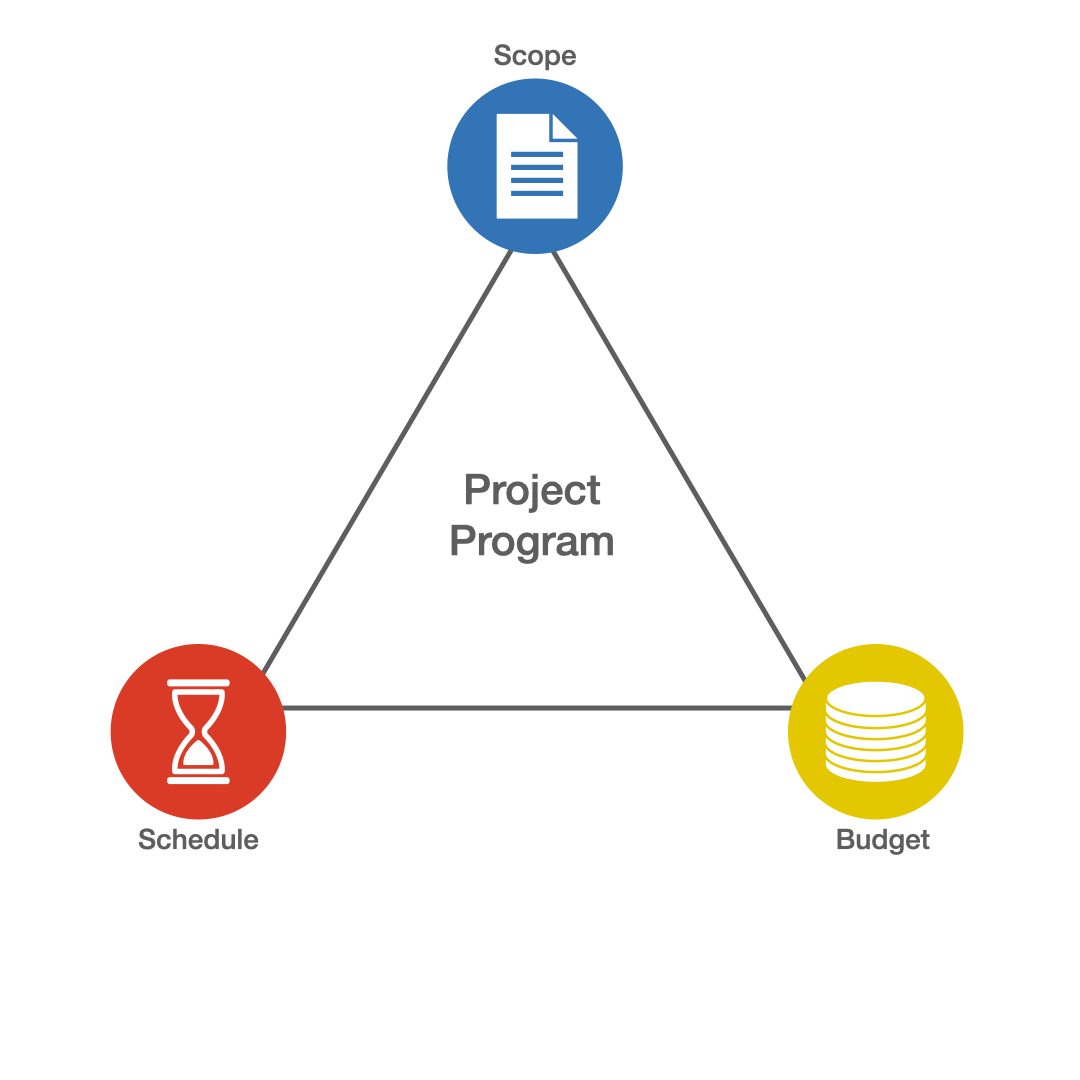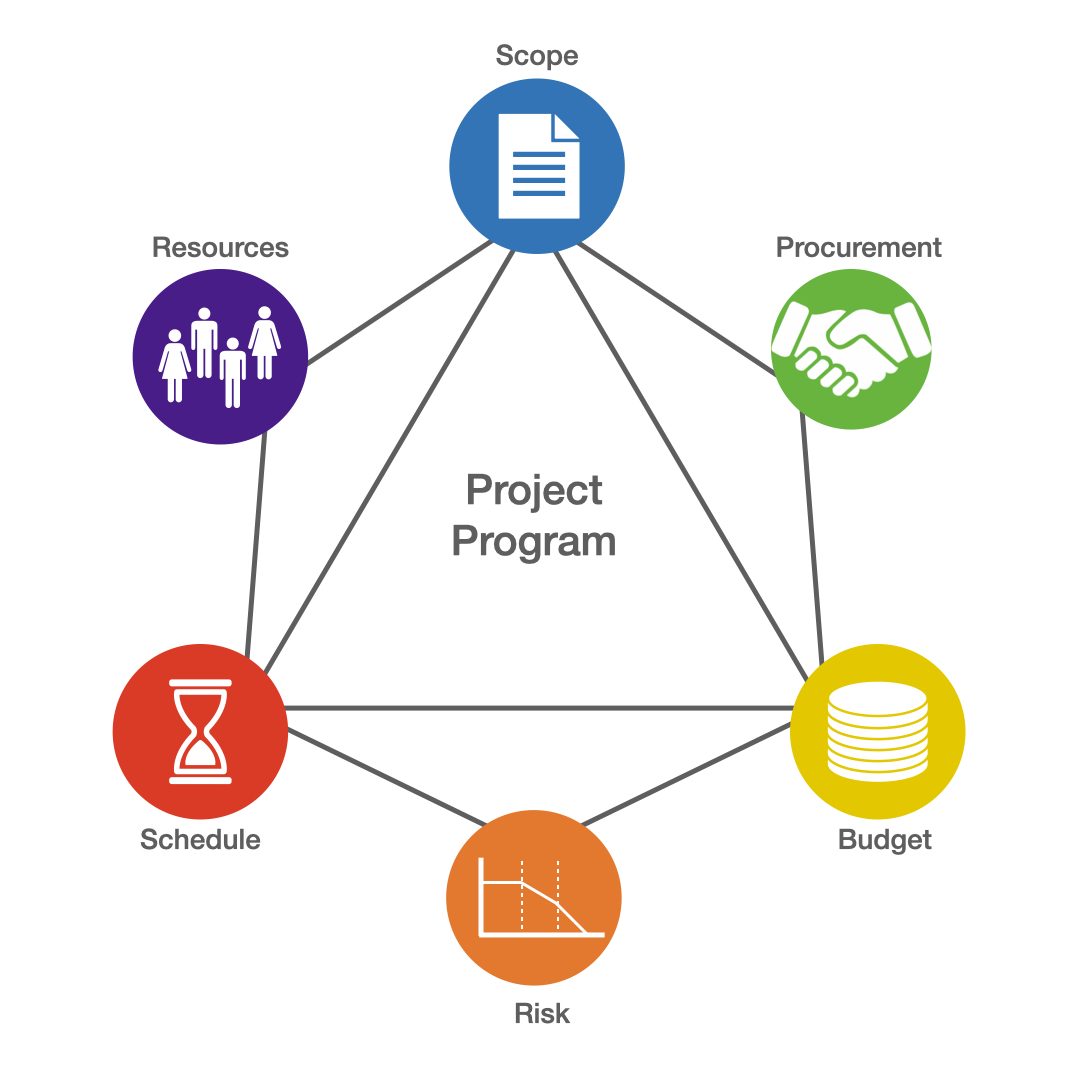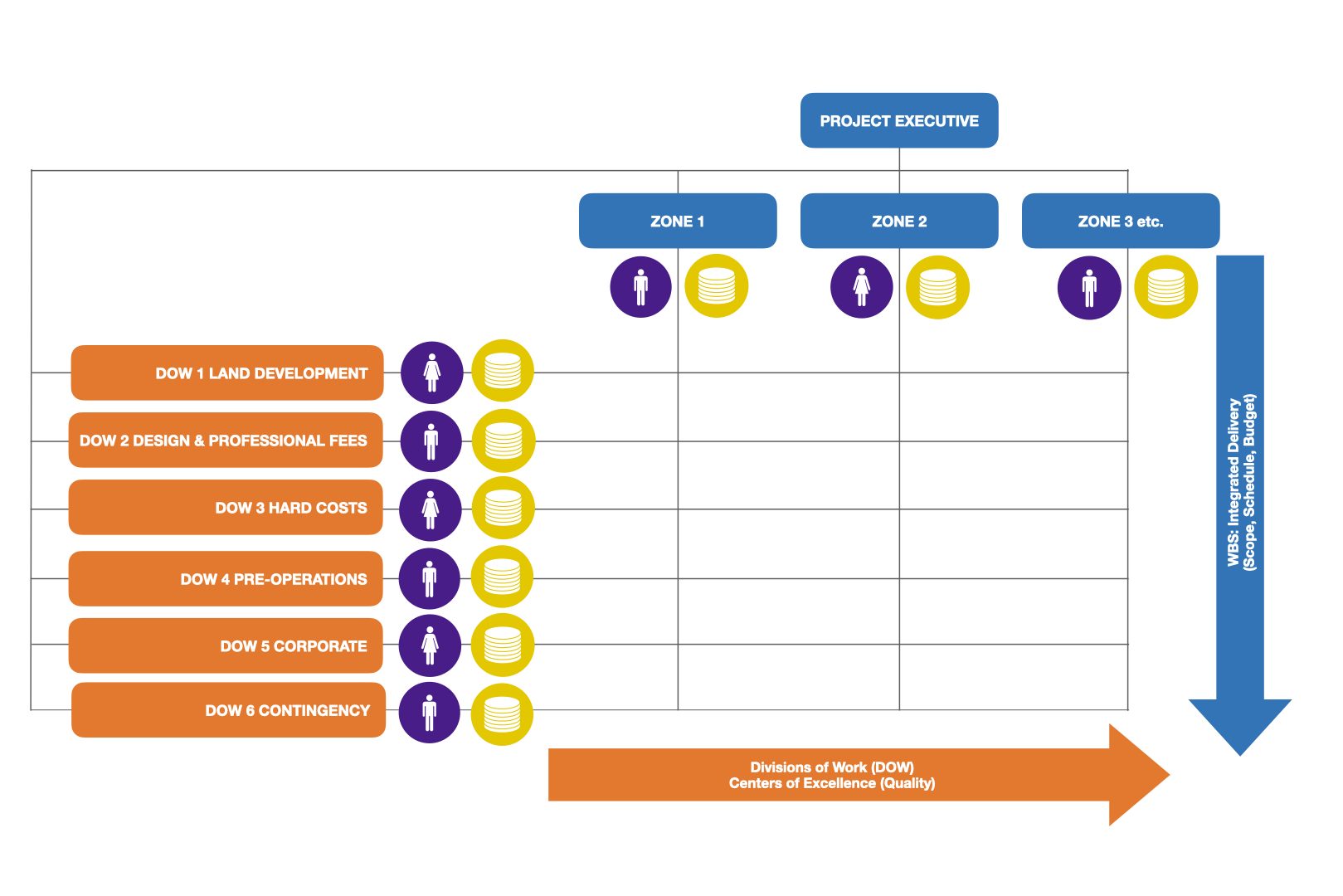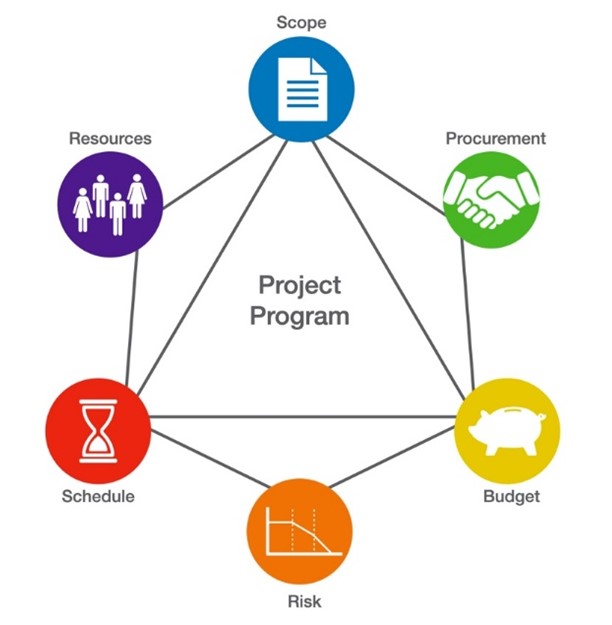Planning an Integrated Program Delivery: Keeping Core Elements Aligned and Tracked for Project Success
The completion of complex theme park and entertainment destination projects on time and within budget is only possible through strategic planning, integrated program delivery, and the continuous tracking of workflows.
The completion of complex theme park and entertainment destination projects on time and within budget is only possible through strategic planning, integrated program delivery, and the continuous tracking of workflows.
At nFusion, we develop and follow a comprehensive roadmap for all projects, ensuring alignment at critical points in a project lifecycle. Below, we explore the different core elements and processes, as well as their roles in successfully bringing these visions to life:
The Project Program
The Project Program is defined by weighing the three foundational components of delivery against each other:

- Scope:
The vision of an attraction – such as a theme park, water park, or location-based entertainment – and the experience it will provide.
The warranted investment as determined by the business justification.
The desired opening date and the plan to meet it.
These components are intricately linked – it is often said that you can bring your vision to life quickly, but it will be expensive; within budget, but it will open when it opens; or on budget and on schedule, but the scope will be impacted.
This is why it is critical to find a realistic balance of the three that works for the needs and goals of a particular project from the outset, and ensure all parties are in agreement.
The Delivery Plan
Once stakeholders have balanced the three opposing forces of scope, budget, and schedule based on project priorities, which defines what is the project program, the next step is often thought to be kicking off the project – but there is more required to bring the project to fruition successfully than that.
A Delivery Plan is needed to lay out not only the what of a project, but how it will be designed and built, as well as the tracking framework for who is accountable for each of the component pieces.
This plan will connect the Project Program – scope, budget, schedule – to three additional elements:

- Resources:
The convergence of schedule and scope. These are the teams, materials, and other components needed to bring the development to life. If there is a short schedule (a tight timeline to deliver the project), more resources – for example, multiple work shifts – are required to complete the work faster. Conversely, if a project has an extended schedule, resources need to be slowly and strategically applied to ensure budget remains on track.
- Procurement:
The convergence of scope and budget. This involves breaking down the program into work and design packages based on the project’s budget. An aspect of procurement is project teams and organization. For small park projects, there may be one team assembled for the entire endeavor. For others, each zone or ‘land’ of a park could have a team consisting of designers, managers, contractors, and vendors.
- Risk:
The convergence of schedule and budget. Identified budget risks, contingency, must be balanced against the schedule milestones that retire the risk as work is completed over the project lifecycle.
Keeping these six components in balance with each other from the planning stages of a project is key to successfully integrated program delivery. The next step is accurately tracking and managing workflows so that all elements remain aligned, and nothing falls through the cracks.
The Work Breakdown Structure and Divisions of Work
After balancing of the six points of the Delivery Plan, tracking all the component pieces as related to budget and schedule is critical. These elements are framed by the Work Breakdown Structure (WBS) and Divisions of Work (DOW).
While both WBS and DOW leadership focus on budget and schedule, the WBS structure flow focuses on the integrated program delivery through all levels of a project.
The responsibility for this is placed on the project management and creative leadership team or teams (which depends on the number of zones). These teams may be represented by one or project executives – typically a creative leader (Producer) and a delivery leader (Project Manager).
The DOW focuses on quality assurance within all trades, which fall under six categories: land development, design and professional fees, hard costs, pre-operations, corporate, and contingency. DOW leadership’s role is to deliver their respective scopes and products to the highest standards. As with WBS leadership, these roles focus on integration of scopes from design through opening day.

The key to success at this stage is accountability. Responsible individuals are assigned to oversee each zone of the WBS or DOW trade and ensure all tasks are scheduled and all costs are reported against scope, schedule, and budget.
WBS levels reflect how the scope is rolled up vertically, while the DOW reflect the horizontal continuity of delivering a division of work across all zones. This matrix management ensures both integration and quality, providing dual-point accountability.
The strength of the Project Program, Delivery Plan, and WBS/DOW matrix is the facilitation of a successful flow of work and accountability, allowing for integrated program delivery.
It is only through this process that elements can maintain alignment for on-track project delivery.


